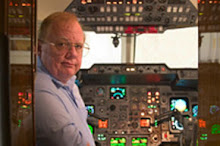NASA makes big commitment to greener skies
By KATHERINE BUTLER
Mother Nature Network (mnn.com)
Related:
"factbox" -->More News
Air pollution is a major problem plaguing this planet. But now the agency most concerned with outer space is taking up the cause for clean air. Scientific American reports that NASA is commissioning eco-friendly airplanes, investing millions into the effort.
NASA's cleaner plan initiative is called N+3, and it hopes to develop cleaner planes by 2035. Under this project, NASA will fund designs for planes that use 70 percent less fuel than current aircrafts. The planes would also emit 75 percent less nitrous oxide, produce much less noise pollution and would require less space for takeoff and landing.
In 2008, NASA awarded $12.4 million to six teams to develop cleaner sonic and subsonic transport vehicles. These teams include representatives from Lockheed Martin, Boeing, GE Aviation, and the Massachusetts Institute of Technology (MIT). NASA is expected to hand out more money in April 2011. These groups will be encouraged to reduce fuel consumption and rethink the general design of commercial airplanes.
Currently, airlines are attempting to retro-fit aircrafts to make them more efficient. Building one from the "rivets up" is a $10 billion proposition, according to Mark Drela, professor of fluid dynamics at MIT's Department of Aeronautics and Astronautics and a leader of the university's N+3 team. As he told Scientific American, "You literally bet the company on almost every new plane."
The Federal Aviation Administration (FAA) announced in June that it would pour $125 million into modifying existing aircrafts to be more energy efficient. This is called the Continuous Lower Energy, Emissions and Noise program. Fuel typically consumes a third of an airlines' budget, so this is primarily a monetary decision. As Scientific American writes, "The Federal Aviation Administration (FAA) estimates that by 2030, the U.S. fleet of commercial aircraft will consume more than 110 billion liters of fuel ... and nearly 160 million people will be flying on U.S. planes."
Great strides are also being made in biofuel and hybrid technology for aircrafts. Boeing has proposed a hybrid airplane that would run on efficient fuels and electricity. Boeing claims that its model could reduce current fuel use by 70 to 90 percent.
Finally, plans are also underway for the most efficient aircraft possible - a solar powered airplane with zero emissions. The Solare Impulse project has already successful tested a prototype, which at present has a non-pressurized cockpit and cannot fly above 8,500 miles. Still, experts are optimistic about its eventual success - and the success of all clean, green flying.
Monday, August 2, 2010
NASA makes big commitment to greener skies
via kansascity.com
